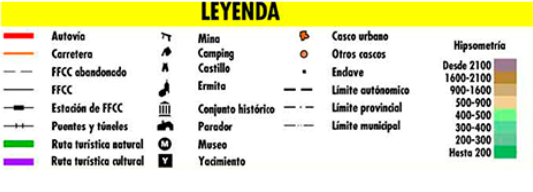
Spring

As the days become longer and the breezes become warmer, new life comes to the olive groves, before turning its attention to the mountain ranges. Come and experience, with all your senses, the joys of a natural park attired in green from top to bottom, where vibrant waters create and nourish landscapes that are bursting with energy.
Tantalise your olfactory system with the scent of flowers and pine trees and the warm, wet smell of the land; treat your ears to the whisper of newly sprouted leaves on the trees moving in the breeze, the rushing of fresh water in streams and springs and the symphony of birdsong during mating season; awaken your sense of touch with the silkiness of fresh grass; delight your taste buds with the flavours of wild spring asparagus and mushrooms; and let your eyes feast on abundant landscapes garlanded with red, white, yellow and mauve flowers.
In the lower areas the open ground is covered with poppies, the spines of the broom are hidden beneath a blanket of sweet-smelling yellow flowers and the cistus bursts forth in an avalanche of white and pink petals. In the mountains, violets shyly proffer their subtle perfumes while the enormous fuchsia-coloured flowers of the peony plant will capture your gaze. Honeysuckle, irises and orchids (of which no fewer than 52 of the 80 species native to the Iberian Peninsula can be found in the park) compete to see whose flowers are the most intricately designed, whilst ferns unfold their fronds and walnut trees, maples, elms and oaks don robes of green.
Such an abundance of pollen and nectar ensures an ever-present buzz from a plethora of insects, feasting, before they themselves are feasted on by the birds. Amongst the many species of butterfly and moth that can be contemplated, attention should be drawn to the Spanish moon moth, a rare and beautiful inhabitant of the forests of Corsican pine and one of the largest European moths.
Flowers, Insects and Birds
Mountain-biking
Asparagus Season
Hiking
The explosion of life that accompanies the arrival of spring to the park will bring a smile to every naturalist's face. However, everyone will be able to appreciate the exhibition of plant life that extends throughout the entire region, with rosemary and cistus giving way to poppies, orchids and peonies. The flowers herald the arrival of bees and butterflies, which in turn attract migratory insectivorous birds returning from their winter roosts. Swifts, blue tits and finches fill the silence of the breaking dawn with their constant song. We may also witness the arrival of the booted eagle and the short-toed snake eagle, two species that never fail to return to the park in spring.
Although this activity can be practised all year round, spring is the perfect moment for mountain-biking as the fierce heat of summer has yet to arrive. Travelling along any of the numerous dirt tracks in the natural park is surely one of the greatest pleasures on offer: there is no single preferred route, as, at this time of year, any path you take will bring you through landscapes bursting with colour and life, full of gushing springs and murmuring streams.
It is during the pleasant March and April afternoons, when winter has long left the park, that you will find a great many locals hunting for delicious wild asparagus. They are common in many areas and the great majority of catering establishments in the park offer mouth-watering dishes prepared using this wild vegetable. If you are a fan of this deep-rooted spring tradition, asparagus season simply must not be missed.
There are limitless opportunities for trekking and hiking throughout the entire park. You can set off on a walk at any time of year, of course, but no season quite compares to spring: you will enjoy landscapes that are more verdant, more peaceful and more intense. You can choose from over two hundred signposted routes, any of which will give you an extremely satisfying hike and make you start planning your next excursion immediately! Suggested routes can be found in the 'Hiking' section, in the 'What To Do' menu.



